Captains of the Rainforest: Maroon Culture in Suriname
Nomad Diana Plater learns how remote communities in this little-known South American country are embracing ecotourism on their own terms.
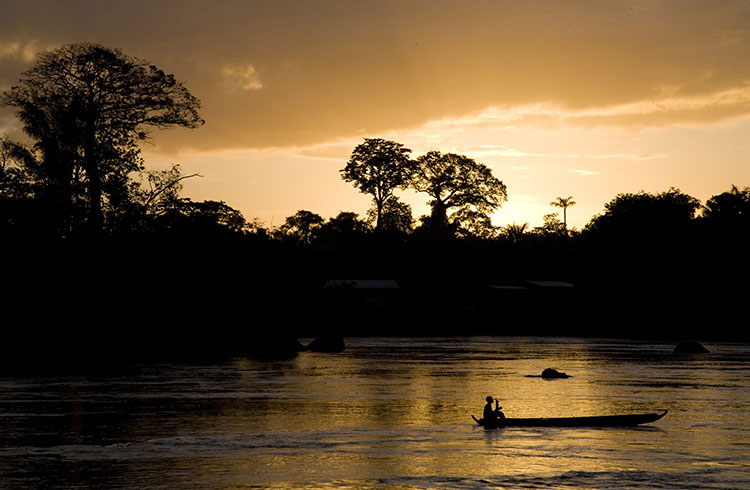 Photo © Getty Images / BartCo
Photo © Getty Images / BartCo
- Maroon communities in Suriname
- Meeting the “captains” of the village
- The potential of eco-tourism in Suriname
- Trip Notes
- Listen to our Suriname podcast
I’m in what is known as “the interior” of little-known Suriname, the former Dutch colony, in the northeast corner of South America.
We’ve driven three hours on the only road south from the capital, Paramaribo, to the river crossing at Atjoni. And then, we’ve whooshed through rapids down the Upper Suriname River in a dug-out canoe powered by an outboard motor, passing Saamaka villages and eco-lodges, dodging huge, flat rocks as we wave to children splashing in natural Jacuzzis, and women washing their clothes.
Independent since 1975, Suriname is bordered to the west by Guyana and the east by French Guiana. Once known as the Guianas, they lie on the geological zone known as the Guiana Shield, where one of the world’s last remaining tracts of relatively undisturbed tropical rainforest meets the Amazon Basin. The region has one of the highest levels of biodiversity on the planet.
I’d traveled all through Latin America, and even lived in Nicaragua for a while, but I’d never visited the Guyanas, and I was intrigued by Suriname. While around 60,000 Dutch visit annually, it’s still hardly known to the rest of the world.
In UNESCO World-Heritage-listed Paramaribo, I stroll around the Waterkant (Waterfront) filled with stately, white Dutch-colonial buildings. I shop at the Witch's Market (also known as the Maroon Market) which sells herbs, bones, shells, and mysterious concoctions for any ailment, including sunburn and insect bites.
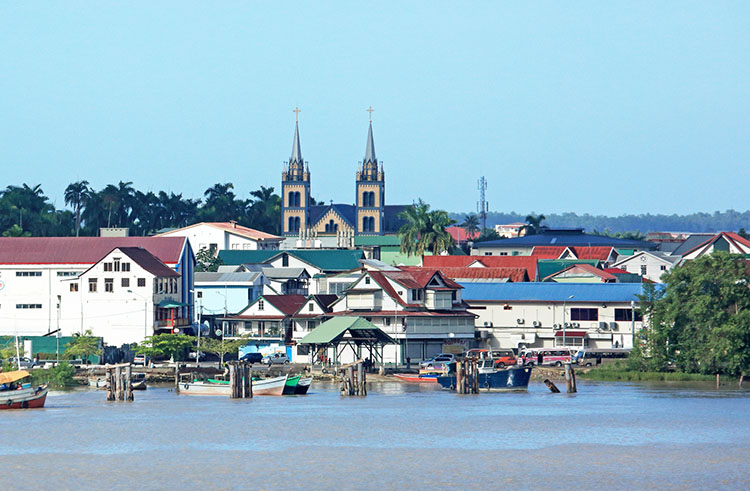
But now I’m on the more adventurous part of the trip, staying at eco-lodges along the river. My last destination is the rustic and comfortable Danpaati River Lodge, where I’m welcomed by local staff singing, dancing, and beating drums. They are Saamaka, one of six Maroon groups in this part of the world, all descended from African slaves.
Maroon communities in Suriname
In the mid-1600s, British, and then Dutch, colonists imported African slaves to work the sugar plantations. Conditions were brutal, and many slaves escaped into the jungle. (The term “maroon,” used throughout the New World, is said to come from cimarrón, a Spanish term for runaway slaves.) Indigenous Amerindians showed the Maroons how to grow and harvest their staple crop, cassava, and the use of medicinal plants. The Maroons formed their own communities and gradually displaced the Amerindians, who moved further upriver.
When slavery was abolished in 1863, Javanese and Indian contract laborers were brought in to work the plantations. As a result, Suriname is now one of the most ethnically diverse societies in South America, with Maroons, Creoles, East Indians, Indonesians, Chinese, Europeans, and Amerindians living together harmoniously.
Danpaati River Lodge was built provide development opportunities for 12 local Maroon villages. The lodge is working towards a 100% local Saamaka team, including all managers. The profits go to the health care center, elderly home care, and a kindergarten for children, whose mothers are often away for days at a time working in the fields.
Travelers can visit the local villages, with a guide, to meet the villagers and learn about Maroon culture. Or they can swim, canoe, fish, do yoga, laze in hammocks, have a traditional massage, don a lifejacket and float down the river, or visit Sentiadam waterfall, a three-day expedition upstream into the rainforest. It’s one of the most relaxing places I’ve ever been.
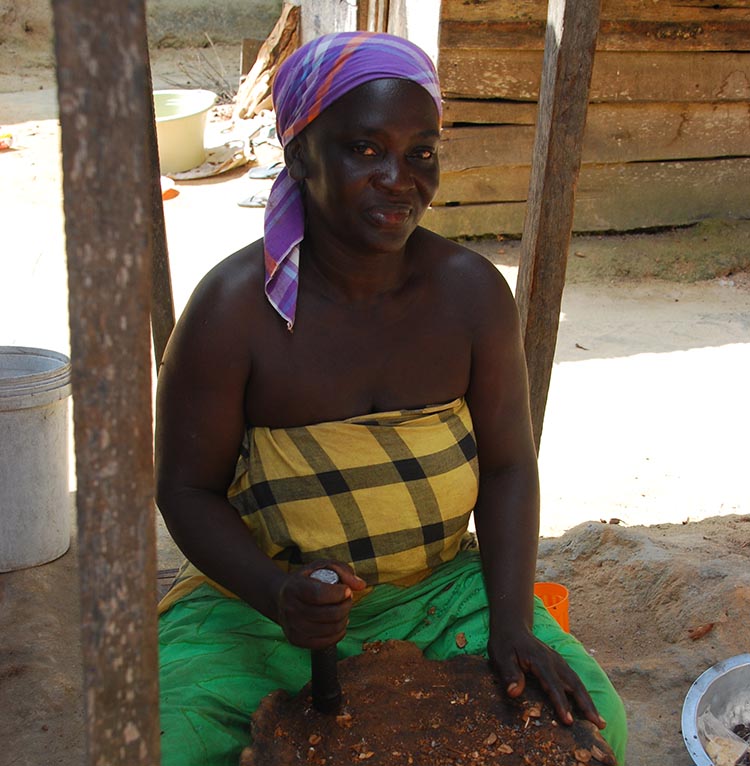
Meeting the “captains” of the village
Elder Maroon leaders are known as kapiteins (captains), in reference to the slave ships their ancestors arrived on. They’re taught to memorize the whole history of the village from the village master.
Their phenomenal memory was an essential asset as they formed a new oral culture – and in this region, their own language: Saramaccan, a Portuguese and English-inspired Creole, which they intersperse with the country’s official Dutch.
There can be women captains, too. In fact, Maroon society is matrilineal, and when a woman comes of age, an aunt will present her with her first adult pangi, or appliqued cotton skirt. She will have her own house, and a prospective husband must present her with pots and pans.
The potential of eco-tourism in Suriname
For 300 years, the Maroons remained almost frozen in time, with few outsiders. But starting 30 years ago, when the main road was built, the communities have seen the potential of tourism, starting eco-lodges or leasing land so that others could run them.
It’s unusual for the average traveler to attend a village council meeting – or krutu – but we are privileged to be invited to attend one in Dan. They’re meeting to discuss the value of further tourism, which brings in badly-needed foreign exchange.
Four captains are sitting in a row in the meeting house, representing the major families in the village. Next to them sits a man who is affirming everything that is said here. I learn later he is the secretary, or basja, who keeps the minutes deep in his head rather than on paper. If there’s ever a disagreement about what took place at a krutu, he’s the go-to man.
I ask the captains if they’re concerned about how tourism could change their traditional way of life.
“Only if you break the rules,” Captain Maloni says. By this, he means the rules of the village. They are protecting the environment in the context of being sustainable farmers. “In the beginning, when tourism came, there was one answer for it, it was yes. And we still say yes.”
But they are emphatic that tourism must be controlled and sustainable – individual visitors, or small groups, who must have a guide with them to enter the villages or do jungle treks. In this way, the Maroons hope to keep both the rainforest and their distinctive culture intact.
Trip Notes
Getting there
KLM offers direct flights from Amsterdam. Caribbean Airlines flies to Paramaribo from Miami or New York via either Barbados or Port of Spain. The airport is around 90 minutes from downtown Paramaribo.
Listen to the World Nomads Travel Podcast - Suriname
Hear more from Diana about her visit with the Maroons, and find out about Suriname's amazing multicultural variety.
Related articles
Simple and flexible travel insurance
You can buy at home or while traveling, and claim online from anywhere in the world. With 150+ adventure activities covered and 24/7 emergency assistance.
Get a quote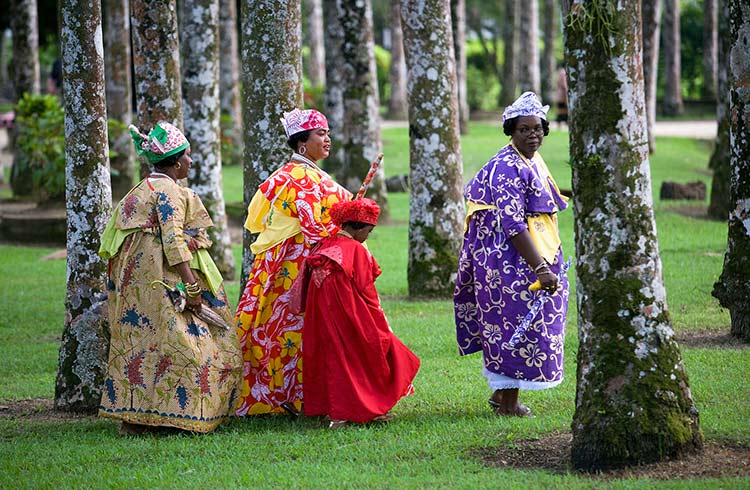
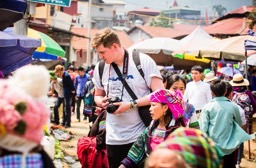
1 Comment
Dear Diana Plater. Thanks for sharing. I am happy that you enjoyed your stay and decided to share your interesting and fun experiences and pictures with the world. I was wondering though whether any Surinamers you visited at the time, were able to review and comment on your article prior to printing. On this 10 October celebrating the day in 1760 when African fighters were the very first to pressure the colonists into a peace/freedom contract, I emphasize they were able to do this because they never ever accepted being kidnapped, displaced from their land, and tortured/oppressed into objects and tools to sustain an unsustainable and parasitic anti-humane slavery system. They were never submissive. So I could not read and not comment, not disagree with the following wording: "colonists imported African slaves", because it illustrates unfortunately the hundreds of years old plantation owners perspective. Indeed that was also the type of wording in history books that were not written by us. But you will agree that people never were and are not objects so they are not to be discussed as an import product. Our country is still struggling today, because of all the visible and invisible remainders and side-effects of this brutality and of the unsustainable exploration of resources. But as other great nations did before, I continue positive and God willing we shall overcome (including our own internal demons and modern-world addictions), and slowly but gradually further develop our people and our country/region through sustainable strategic use of our resources, in an honest and transparent manner, and where relevant in partnerships with other nations because we are after all part of the wider world. We must strive to continuously improve conditions and quality of life for Surinamers in the first place. And I am convinced we can so continue to welcome people like yourselves and others from all over the world, to visit and enjoy our natural and cultural wealth with us.